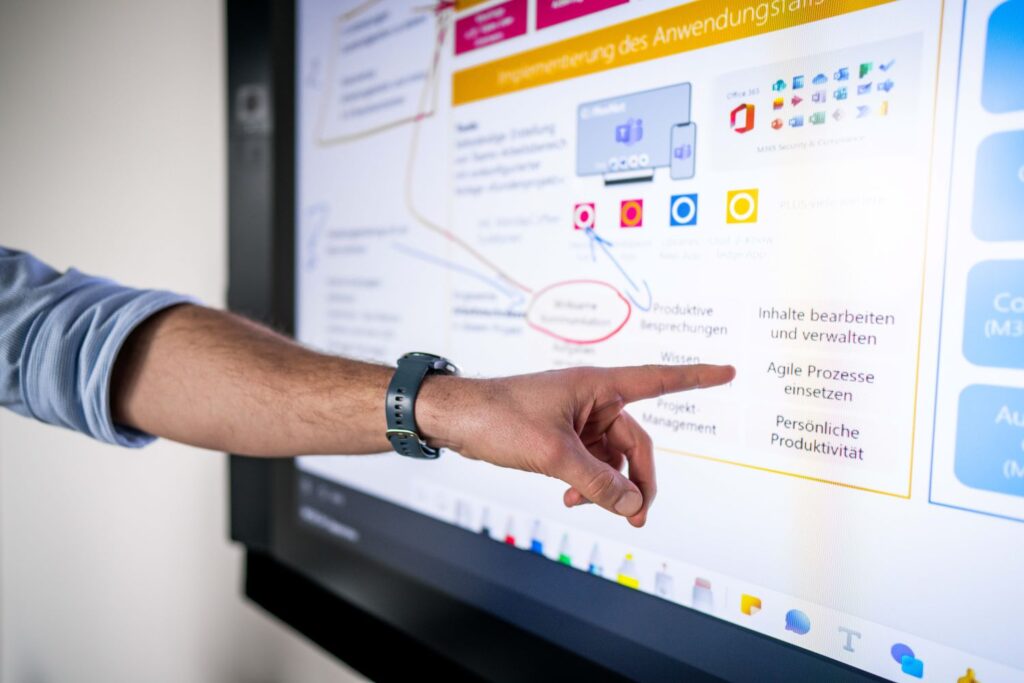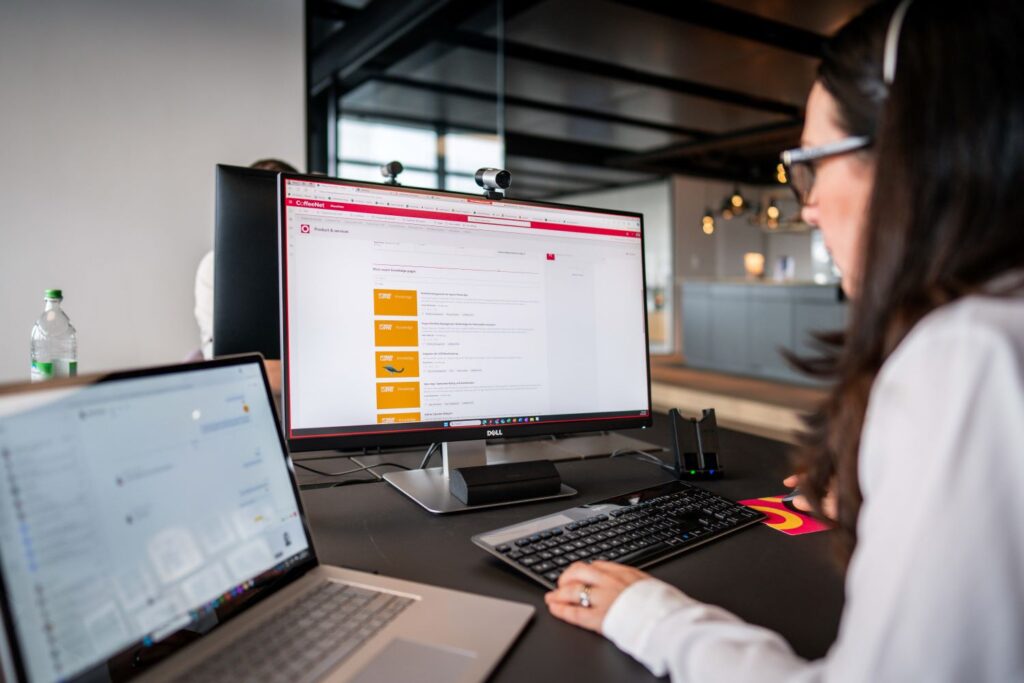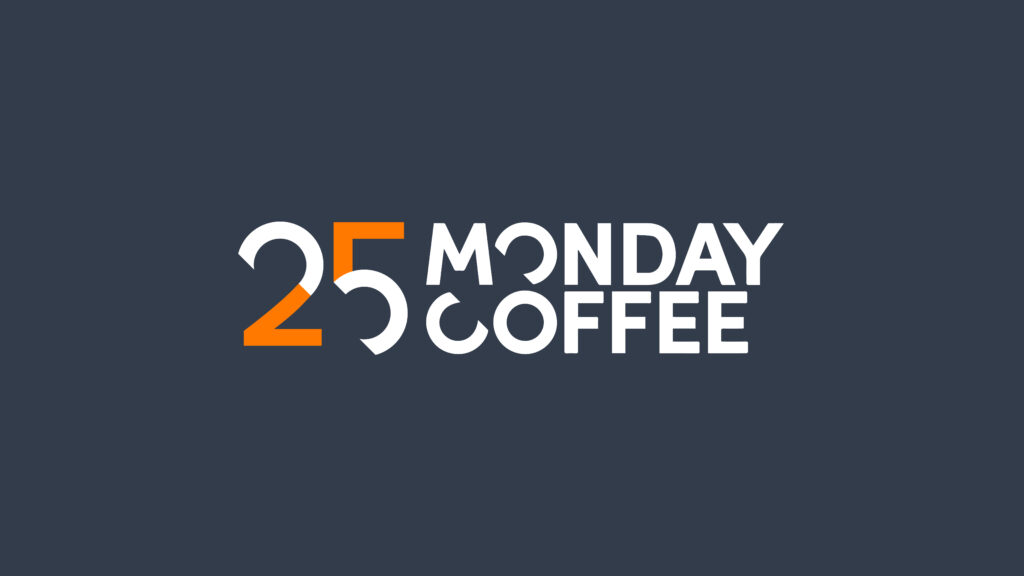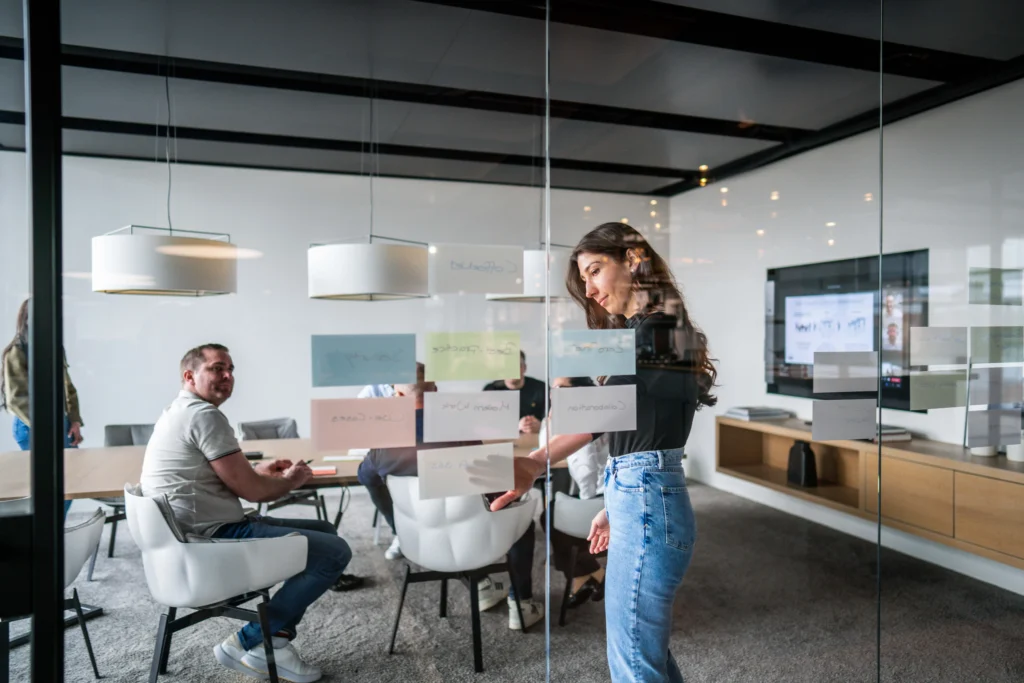
In der digitalen Arbeitswelt sind Flexibilität und Effizienz entscheidend für die Produktivität und Motivation von Teams. Gerade wenn ein Projektraum benötigt wird, um Informationen, Tools und Zugriffsrechte zentral bereitzustellen, zeigt sich, wie wichtig ein strukturiertes Workspace Management ist. Das manuelle Erstellen solcher Arbeitsräume mit dem Microsoft 365 Tools ist oft kompliziert und zeitaufwendig, es bindet IT-Ressourcen und kann das Projekt ausbremsen. CoffeeNet 365 vereinfacht diesen Prozess: In wenigen Klicks sind Räume erstellt, die alle nötigen Berechtigungen und Inhalte umfassen.

Herausforderungen beim manuellen Einrichten
digitaler Workspaces
Das manuelle Einrichten digitaler Arbeitsräume in Microsoft 365 ist oft zeitaufwendig und fehleranfällig. Viele Schritte sind nötig, darunter:
- SharePoint-Site anpassen
- Zugriffsrechte und Sicherheitseinstellungen konfigurieren
- Mail-Einstellungen in Exchange anpassen
- Ordnerstruktur in SharePoint anlegen
- Mitglieder einladen und Berechtigungen vergeben
- Zusätzliche Tools wie Planner und Outlook integrieren
Diese Schritte sind nur einige Beispiele, die viel Know-how und Zeit benötigen. Ohne eine zentrale Lösung verbringen IT-Teams oft viel Zeit damit, Workspaces pünktlich und fehlerfrei bereitzustellen.
Einfache Bedienung, grosse Wirkung. Mit dem Workspace Management von CoffeeNet 365 gibt es ein flexibles Interface, mit der Workspaces an alle Projektanforderungen angepasst werden können.
Individuelle Anpassung
- Workspaces lassen sich exakt an die Team- und Projektanforderungen anpassen – von spezifischen Inhalten über Kanäle bis hin zu Berechtigungen und Vorlagen.
Volle IT-Kontrolle
- Lifecycle- und Review-Policies garantieren der IT einen klaren Überblick und die automatische Erfüllung von Governance-Anforderungen.
Schnellstart für Projekte
- Mitarbeitende können schnell eine passende Vorlage auswählen und direkt loslegen.
Massgeschneiderte Workspaces per Klick
Einige Projekte stellen spezielle Anforderungen an die digitalen Arbeitsräume. Damit auch dann die Zusammenarbeit sicher und reibungslos verläuft, können Mitarbeitende einfach Workspaces mit erweiterten Funktionen erstellen, wie zum Beispiel:
- Sensitivitätslabels für Sicherheit und Compliance
- Integrierte Apps und Office-Vorlagen für einheitliche Arbeitsprozesse
Das manuelle Einrichten solcher Arbeitsräume war bisher aufwändig. Jetzt geht es schneller, da alle wichtigen Einstellungen schon in den Vorlagen integriert sind. So geht Workspace Management.
Chaos vermeiden: Automatisiertes
Lifecycle-Management
So nützlich digitale Arbeitsräume auch sind – über die Zeit kann eine unkontrollierte Menge an Workspaces zur Belastung werden. CoffeeNet 365 enthält ein automatisiertes Lifecycle-Management, das Workspaces nach einer definierten Zeitspanne oder bei Inaktivität archiviert oder löscht. Das reduziert die Datenmenge und sorgt für Übersichtlichkeit.
Kosten reduzieren, Effizienz steigern
Mit CoffeeNet 365 Workspace Management sparen Unternehmen Zeit und Ressourcen, steigern die Produktivität und entlasten die IT. So lassen sich die digitalen Arbeitsräume nachhaltig nutzen. Eine zentrale Lösung für Workspaces verbessert nicht nur die Zusammenarbeit, sondern steigert auch die Effizienz und senkt die Kosten in IT-Abteilungen.



